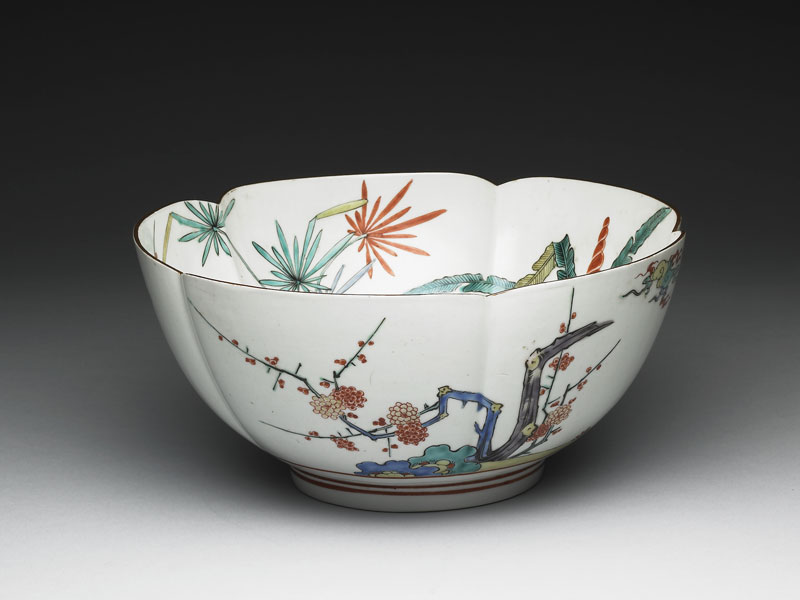Pottery making in Japan had emerged more than twelve thousand years ago. The ability to use high temperature to produce glazed pottery was evident by the ninth century during the Heian period (794-1185), although high-temperature porcelain wares continued to be imported from China. It was not until the seventeenth century that Japan began to produce porcelains characterized by high hardness, purity, and translucency. At first, with kiln workers brought over from Korea, there were experiments with making and firing porcelains in Arita-machi, Saga Prefecture, Kyushu. Subsequently, by imitating Chinese styles and techniques, Japanese ceramics started to produce blue-and-white and wucai wares. In the mid-seventeenth century, when China was undergoing the tumultuous transition from the Ming to Qing Dynasty and the export of Jingdezhen wares was slowing down, Japanese ceramic industry grabbed a commercial opportunity. After 1670, the 'Kakiemon' style and the 'Kirande' style, both of which featured multi-colored overglaze and were unique in Japanese ceramic culture at the time, became extremely popular in the European market. On the other side of the world, these Japanese wares were introduced to the Qing court through various channels while Japanese-styled wares started to be produced in Jingdezhen kilns. These examples demonstrate that Japanese porcelains were championed in Europe and in Asia.


